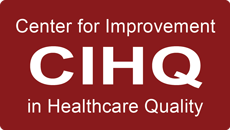In 2023, pharmacy departments experienced some big changes in regulatory requirements. As a result, hospitals should prepare for how those revisions will impact surveys. What happened? On November 1, 2023, the final revisions to the United States Pharmacopeia (USP) General Chapter Pharmaceutical Compounding – Sterile Preparations became official. Among the plethora of changes, you will find the importance of staff training and competency to perform sterile compounding front and center. After all, USP standards are nationally accepted standards of practice that have been adopted by CMS and most State Boards of Pharmacy with good reasoning. The USP standards are developed to reduce risks of contamination and incorrect dosing which ultimately safeguard patients from infections and medication errors.
To regulate this important component of patient safety, organizations should anticipate surveyors diving deeper into employee files. While this list is not meant to be all-inclusive, it is meant to help your organization be survey-ready with competency documentation.
The targeted list for the selection of employee files will be pharmacy staff (compounding within an ISO environment), followed by those employees that impact the sterile compounding process, e.g., pharmacists, pharmacy technicians, supply chain, and environmental services staff. The new training and competency requirements include the following:
- For sterile compounding staff, and those individuals responsible for oversight of compounding personnel, training must be completed initially and at least every 12 months. USP provides a specific list of components to be included in the training, e.g., hand hygiene, garbing procedures, cleaning and disinfection, calculations and mixing, principles of achieving and maintaining sterility, etc. (See USP for a detailed list.)
- Before initial compounding, all compounding personnel must successfully complete initial garbing competencies at least (3) separate times in succession with gloved fingertip/thumb (GFT) sampling of both hands. Yes, the (3) successful completions must be in succession—failure of any of the (3) initial garbing evaluations requires repeat testing until all (3) are successfully completed in a row. Additionally, all garbing competencies must be completed with GFT sampling (after garbing) with documentation that hand hygiene and garbing procedures were visually observed. Lastly, to be deemed competent the GFT samplings must result in 0 CFU (no growth) from both hands.
- Before initial compounding, all compounding personnel must successfully complete an aseptic manipulation evaluation consisting of media-fill testing, GFT sampling (performed after media-fill testing), and surface sampling of the compounding area. The media-fill testing must result in no visible turbidity or other visual manifestations of growth. The GFT sampling must find ≤3 CFU as the total from both hands and surface sampling within the compounding area of an ISO Class 5 Primary Engineering Control (PEC) must result in ≤3 CFU.
- The ongoing garbing and aseptic manipulation competencies depend on the compounded sterile preparation (CSP) category performed. Ongoing competencies are required at least once every 6 months for Category 1 and Category 2 CSPs, which are the most common, and at least once every 3 months for Category 3 CSPs. For those providing direct oversight of compounding personnel, a competency assessment is required at least every 12 months.
- USP documentation requirements include the following: person evaluated; observer; evaluation date and time; media and components used (including manufacturer, expiration dates, and lot numbers); starting temperature for each interval of incubation; dates of incubation; and the results with the name of the person who read and documented the results.
- Don’t forget about personnel performing restocking or cleaning/ disinfection duties outside of the Primary Engineering Control (PEC), e.g., supply chain and environmental services staff. To avoid potential contamination and maintain environmental controls, the organization’s policies and procedures must define the training requirements, both the initial and ongoing frequency.
While training and competency documentation will be a survey focus, USP brought forth many changes that may impact the organization’s daily processes, documentation, and survey activities related to medication preparation. Hospitals are strongly encouraged to compare current practices against the newly official USP standards so any prospective compliance gaps can be identified and closed.
References:
Centers for Medicare and Medicaid Services. (2023). State Operations Manual, Appendix A – Survey Protocol, Regulations, and Interpretive Guidelines for Hospitals.
Centers for Medicare and Medicaid Services. (2020). State Operations Manual, Appendix W – Survey Protocol, Regulations, and Interpretive Guidelines for Critical Access Hospitals (CAHs) and Swing-Beds in CAHs.
United States Pharmacopeial Convention. General chapter pharmaceutical compounding—sterile preparations. USP-NF 2023, Issue 1, November 1, 2022, official as of November 1, 2023.
Centers for Medicare and Medicaid Services. (2020). State Operations Manual, Appendix W – Survey Protocol, Regulations, and Interpretive Guidelines for Critical Access Hospitals (CAHs) and Swing-Beds in CAHs.
United States Pharmacopeial Convention. General chapter pharmaceutical compounding—sterile preparations. USP-NF 2023, Issue 1, November 1, 2022, official as of November 1, 2023.
